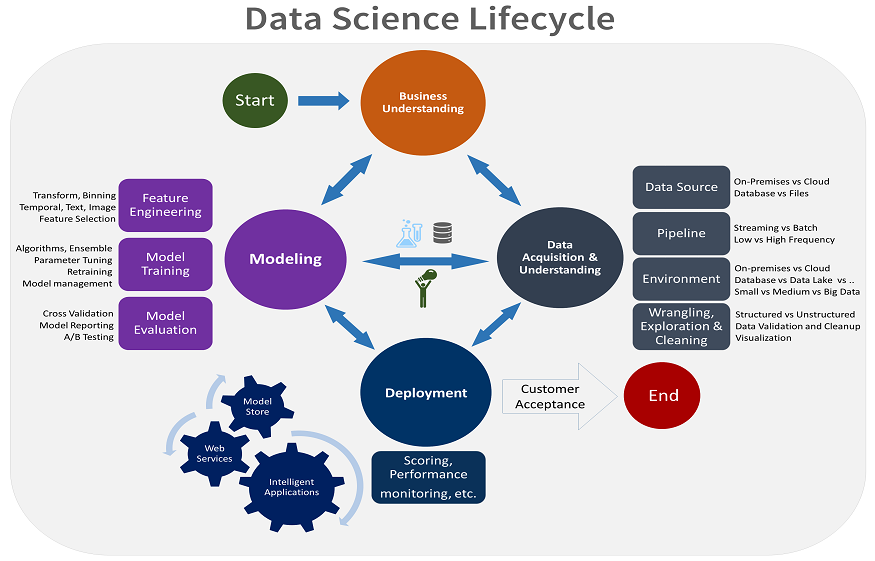The data science lifecycle refers to the set of stages that a data science project goes through to help understand the data and extract useful information from it. Understanding the data science lifecycle is essential for any data scientist to be able to design, execute, and communicate the results of a successful data science project.
This blog will look at the different stages of the data science lifecycle.
1. Problem Formulation
The first stage of the 4data science lifecycle is problem formulation. The data scientist collaborates with stakeholders at this stage to understand the business challenge that needs to be solved. It includes defining the project’s objectives, finding appropriate data sources, and understanding restrictions and limitations.
2. Data Collection
Once the business problem has been formulated, the next stage is data collection. During this stage, the data scientist works to gather the relevant data that will be used to address the problem. The data can be gathered from various sources, including internal databases, public databases, or other sources. The data scientist must also ensure that the data is high quality and relevant to the problem at hand.
3. Data Preparation
After collecting the data, it must be cleaned, transformed, and prepared for analysis. It may involve removing duplicates, missing values, outliers, and other anomalies that could skew the results. The data must also be processed and normalized before it can be analyzed. This stage is time-consuming and requires a lot of attention to detail. Any errors made at this stage can have a significant impact on the results of the analysis.
4. Data Analysis
In this stage, the data is analyzed to extract meaningful insights. It can be done using various techniques such as statistical analysis, machine learning, or data visualization. The analysis should be done in a way relevant to the business problem and can answer the questions posed during the problem formulation stage.
5. Model Building
After analyzing the data, the data scientist builds a model using the selected algorithm(s) and training data to predict future outcomes. It involves navigating multiple models to find the best one based on performance metrics, such as accuracy, precision, recall, and F1 score. The model should be validated and tested using a separate set of test data to ensure its accuracy and reliability.
6. Deployment and Maintenance
The final stage in the lifecycle of data science is deployment and maintenance. The model is deployed and integrated into the existing system at this stage. The model must be examined and updated regularly to ensure that it remains accurate and relevant.
Professional Courses for Data Scientists
The data science lifecycle is critical to the success of any project. And as an aspiring data scientist, learning about them is incredibly important to completing data science projects and succeeding in the role.
So, if you want to learn more about the data science lifecycle and other aspects of data science and apply them in business situations, enroll in a professional course to earn a certificate in data science. Some of the benefits of the professional course are:
- It helps build foundational concepts and principles of data science, such as statistics, programming, and machine learning.
- It provides hands-on experience with industry-standard tools and technologies.
- Professional courses often offer opportunities to network with industry professionals and build relationships that can lead to job opportunities.
- Earning a certificate in data science shows employers that you are committed to your career and willing to invest time and effort into your professional development.
Professional courses can help you stand out in a competitive job market and advance your career by providing the knowledge, skills, and connections you need to succeed.



